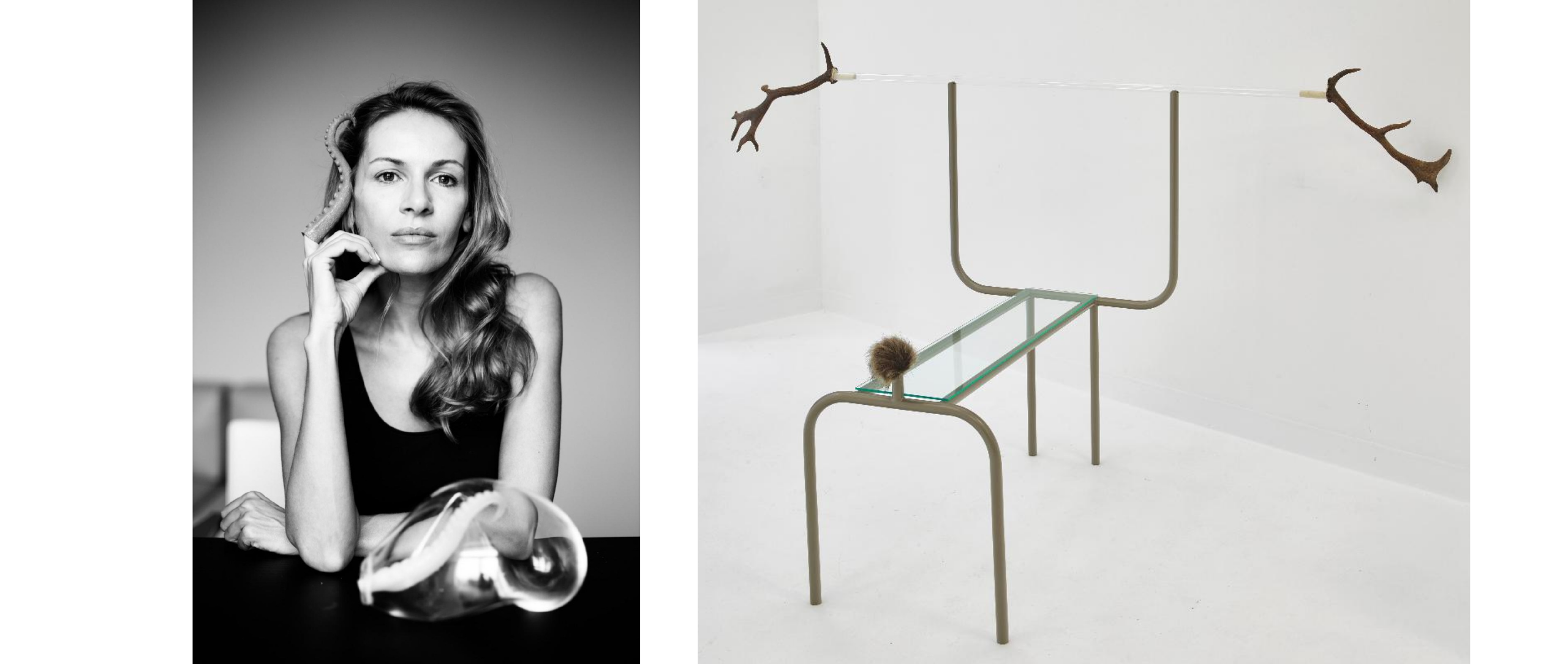What role do environmental issues play in your work?
Current challenges – such as the melting glaciers, the extinction of plant species, the mutation of animals or pandemics, and how humanity is called to coexist with these realities – become a territory of endless learning for me and my artistic exploration becomes a way of processing or understanding these current issues. Usually the topics are articulated through the prism of personal bodily experiences and the aesthetic investigation of their possible reception, resulting in the creation of hybrid sculptures, living installations or video essays. For me, as a visual artist , tactile and sound-based interactions reveal new connections and ways of participating in and reflecting on the environment we live in now.
You presented “My Second Body, Exercises of Entangled Empathy” in the major exhibition “Living Matter” at the Tretyakov Gallery. Can you describe this work?
MY SECOND BODY: Exercise of Entangled Empathy (2021) is a new body of work that is inspired by Daisy Hildyard’s book The Second Body, in which she argues that nowadays, every living thing has two bodies. The individual is doubled by climate change in Hildyard’s thinking: ‘in a technical way you are in the sky causing storms, and you are in the sea, you have two distinct bodies. Your second body is not so solid as the other one, but much larger. It is not a concept, it is your own body’ (S). The new series of sculptures revolves around the notion of our first and second bodies and their limits and connections to the habitat. Working on this series, I tried to explore the interconnections between our physical and planetary selves through calling our corporeal integrity into question. On the one hand, our bodies possess an impressive plasticity, which is evident in our relationship with technologies; on the other hand, they are imperfect and vulnerable,
Spending lockdown in London, I noticed how people use their surroundings — parks and their contents – trees, stones, and the earth’s surface — as places and props for working out their bodies and minds. In my quest to discover the link between these exercising bodies and the Second Body, I started to investigate how our bodies are affected by different abstract assemblages, including the urban environment, economy, biology and technology.
Sculptures resembling the shapes of the gym equipment from one side symbolizes the arrival of our cyborg selves, stating the fact of our posthuman condition, but from the other side they speak about our fragile interconnectedness with nature – the complex mimetic relationship between humans, animals, plants and machines. My new sculptures include fragile glass elements, natural rock formations, plants and corals, which capture the glimpses of geological time that are imprinted on them – habitats and bodies affected by climate change that are still breathing, therefore calling for an ethical response.


What are the most important environmental issues for you?
Our environment faces several problems and many of them seem to be worsening with time, but we tended to not notice them because they were too “far away” from us. Now we can see the problems with our own eyes and we cannot deny them any longer: glaciers we visited 10 years ago in Iceland do not exist anymore, the colorful coral reef in the Maldives has been bleached and destroyed by the warm waters, the air we breathe carries zoonotic diseases…
Your work includes neuroscience, biotechnology and ecology – how?
In my work I explore the intersection between bio-art and new feminist materialist ethics. My living sculptures and environments reflect upon recent discoveries in neuroscience, biotechnology and ecology through the lens of personal bodily experiences. I create fragile environments by combining substances that come from different natures – such as steel and neon with corals and breast milk or living plants with electronic devices, using software to explore our relationships with nature.
Engaging with the diversity of agents entangled and intertwined with each other and their surroundings, I am trying to show a variety of transcorporeal imprints in the bodies of others — humans and other animals, plants, water, light, soil, stones and fossils.
Do you eco-design your work?
I am conscious of the materials and processes I use in my artistic practice. I work with mostly natural materials and I quite often recycle work, in the way that one installation grows into another…
Conversation with Alice Audouin.
October 2021
Credits: Courtesy of the artist
Link to the artit’s website Margo Trushina
Find all the articles from Impact Art News n°34 – October 2021
To subscribe to Impact Art News (free): here

